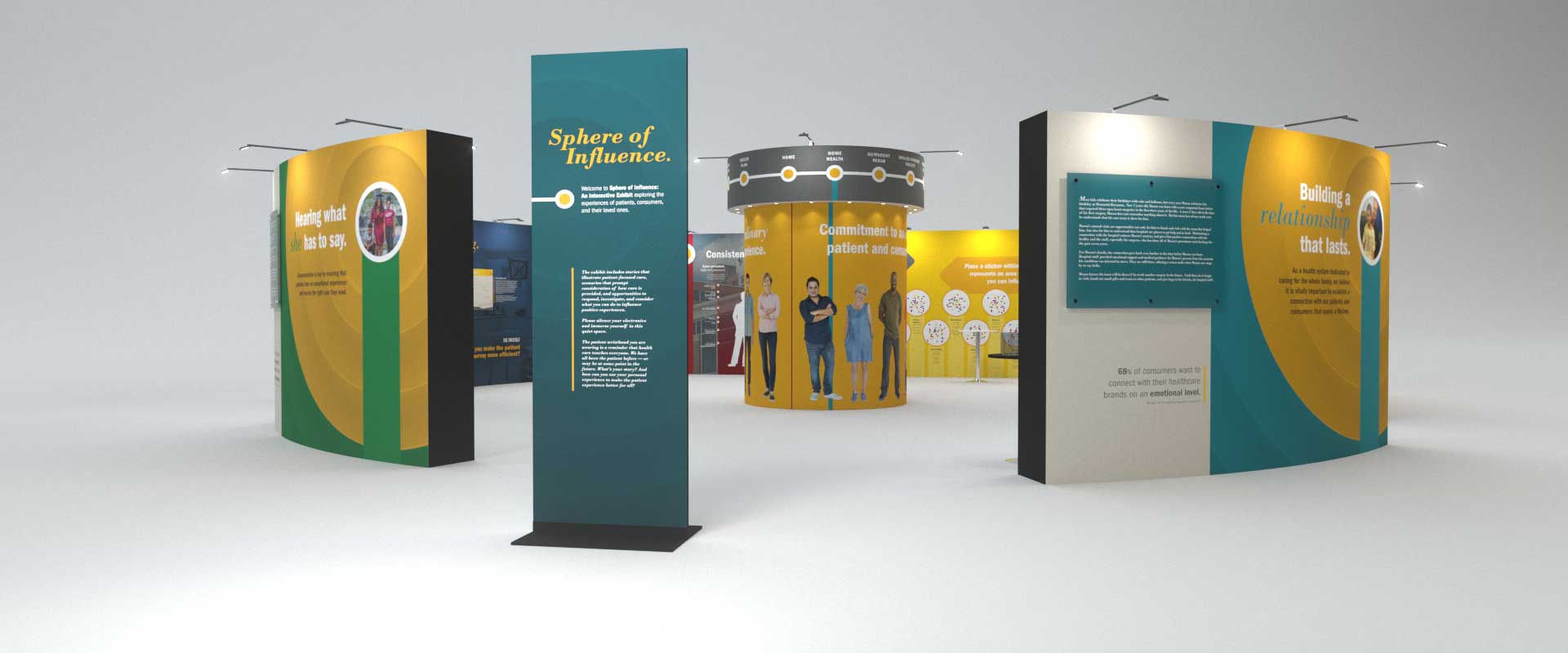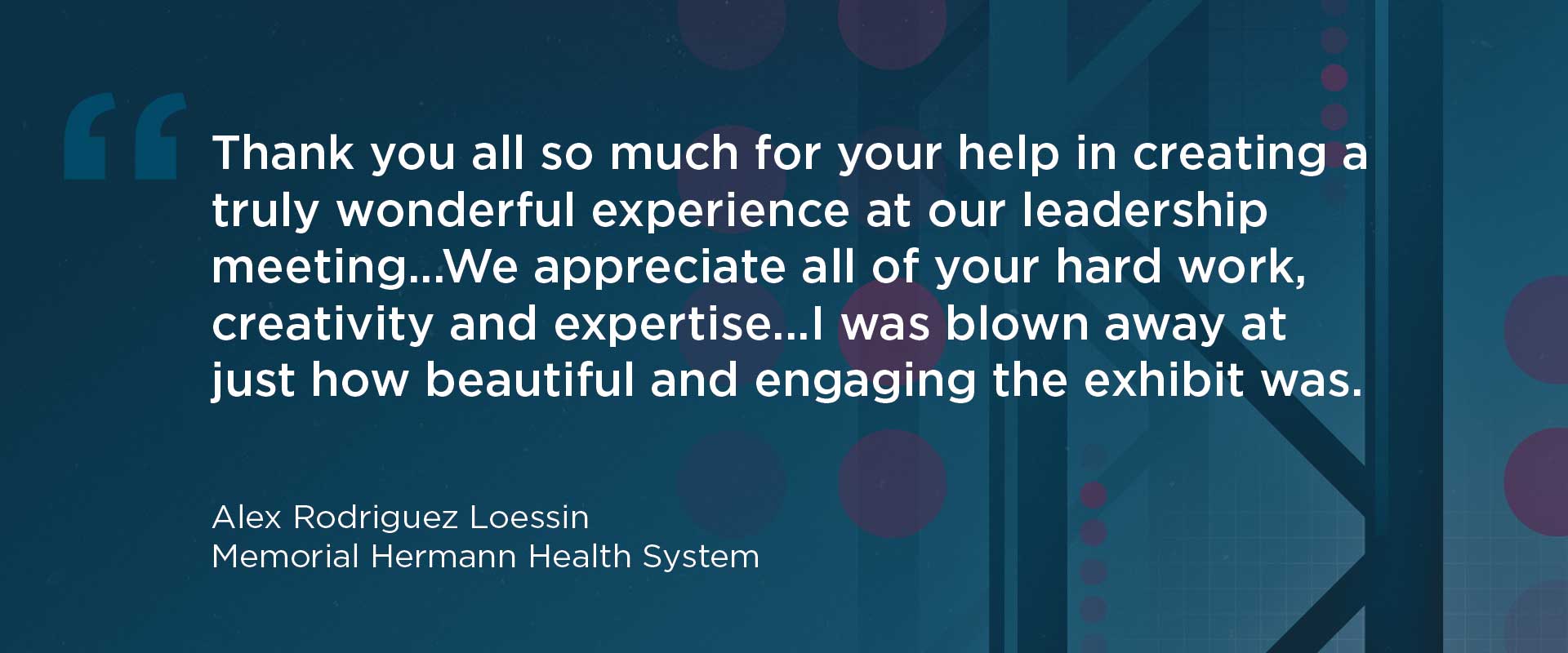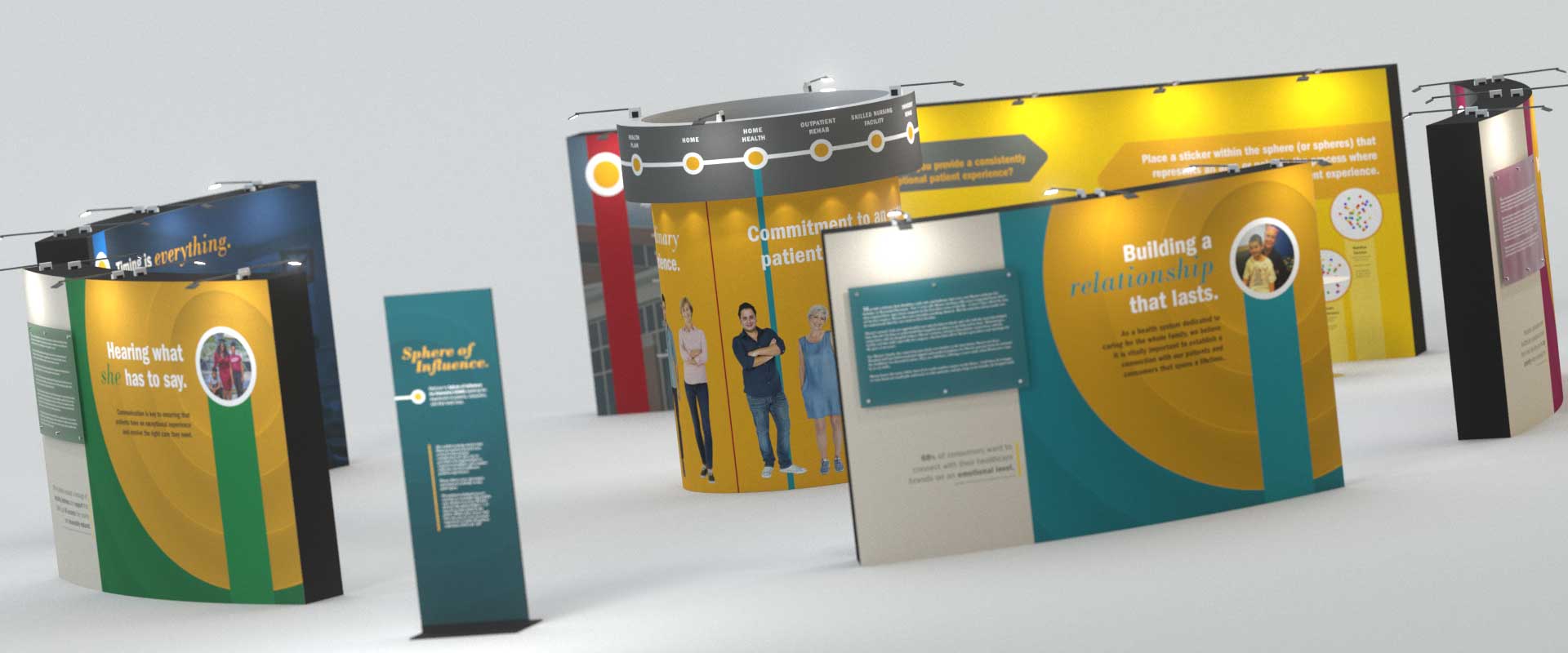The goal of the Memorial Hermann Annual Leadership Meeting is to inspire and empower administrators to lead their teams in the provision of personal, comprehensive patient care, and cultivate an environment that puts the patient first.
The Challenge
Memorial Hermann’s leadership group, approximately 600 people, were all set to attend meetings and breakout sessions about the upcoming year. The planning team wanted an interactive component that would prompt company leadership to consider what each person could do to contribute to the organization’s overall success. The challenge? How to help employees discover what is working; what each employee, personally, has control over; and how each person can build on their success.
The Solution
In this case, the solution is a shape: Physically, a circle; philosophically, a sphere. The key to building on success is understanding and expanding one’s SPHERE OF INFLUENCE, so we built the physical plan in concentric circles. At the center of the room – and the central focus of the organization – were the patients, visible in a continuous image around a circular pillar. Their central location in the exhibit represented Memorial Hermann’s goal of putting them first, and the patient journey was illustrated in a continuous circle around the top.

The next circle was a series of panels facing the patient core, featuring case studies that illustrated how processes differ when patient care is prioritized above all else, and the different outcomes for the patients in terms of health and satisfaction. This circle also asked attendees to consider what processes they could control, and how they could influence them.
The outward-facing circle showed real success stories within the organization. These stories celebrated employees and processes that put patient needs first, and illustrated the positive outcomes. They functioned as a standing invitation to attendees to realize that success is not a far-off ideal, it is in their midst; and successful processes can be emulated when people take control of what is within their sphere of influence.
To remind attendees that we all have skin in the game, each person received a hospital wristband when they checked in; this small reminder – that at one time or another we are ALL patients, and each journey is important – personalized the exhibit for attendees and prompted them to think about what it feels like to receive care as well as provide it.
QR codes printed on exhibit walls invited further exploration, and provided additional opportunities for attendees to give feedback, answer questions, and post comments.
The Conclusion
Our clients were so pleased they decided to take this show on the road! They set dates for the exhibit to tour to different locations throughout their Houston system, giving other leaders and employees an opportunity to participate. This greatly extended the exhibits “sphere of influence”.
We provided data from the interactive exhibit that was used to better understand and empower their leadership, maintain a patient-centric approach, and exercise their sphere of influence whenever possible.







